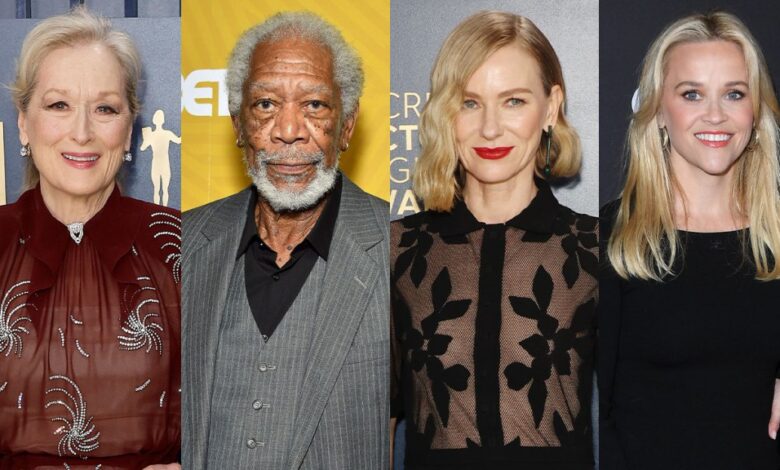Meryl Streep, Morgan Freeman, Naomi Watts and Reese Witherspoon Set for Nicole Kidman’s AFI Tribute

Nicole Kidman‘s friends and collaborators will be in the building when she is honored at the 49th AFI Life Achievement Award Gala.
AFI shared that Meryl Streep, Morgan Freeman, Naomi Watts and Reese Witherspoon are set as presenters for the gala, scheduled to take place at Hollywood’s Dolby Theatre on April 27.
Fellow AFI Life Achievement Award winner Streep worked with Kidman on HBO’s Big Little Lies, as did Witherspoon. Both Kidman and Witherspoon served as executive producers of the Emmy Award-winning hit series. Watts is a longtime friend of Kidman dating back to their early acting careers. They both starred in the 1991 feature Flirting. Freeman and Kidman collaborated on the Paramount series Lioness for Taylor Sheridan.
“Nicole Kidman embodies the glamour and romance of Hollywood past – a true screen icon – but she is also a risk taker – and so each performance is something new and something profound,” said AFI president and CEO Bob Gazzale. “And like all truly great artists, Nicole not only gives back, she drives culture forward with her commitment to amplifying the voices of female directors and producers.”
It was also announced that the tribute special will premiere on TNT on June 17 and on Turner Classic Movies (TCM) on June 27. It marks the ninth year the Emmy-winning AFI Life Achievement Award special will air on TNT.
As previously announced, Kidman is the first Australian actor to receive the AFI Life Achievement Award, joining such past honorees as Bette Davis, Alfred Hitchcock, James Stewart, Gene Kelly, Kirk Douglas, Sidney Poitier, Elizabeth Taylor, Martin Scorsese, Steven Spielberg, Harrison Ford, Barbra Streisand, Tom Hanks, Meryl Streep, Al Pacino, Morgan Freeman, Jane Fonda, Steve Martin, Diane Keaton, George Clooney, Denzel Washington and Julie Andrews.
The 49th AFI Life Achievement Award event will also feature high-profile cinematographer Matthew Libatique (Maestro) who will be honored with the Franklin J. Schaffner Alumni Medal. The official dinner sponsor is Canva, the official water sponsor is Fiji and the official red carpet sponsor is AMC Theatres. All proceeds will support the American Film Institute.


